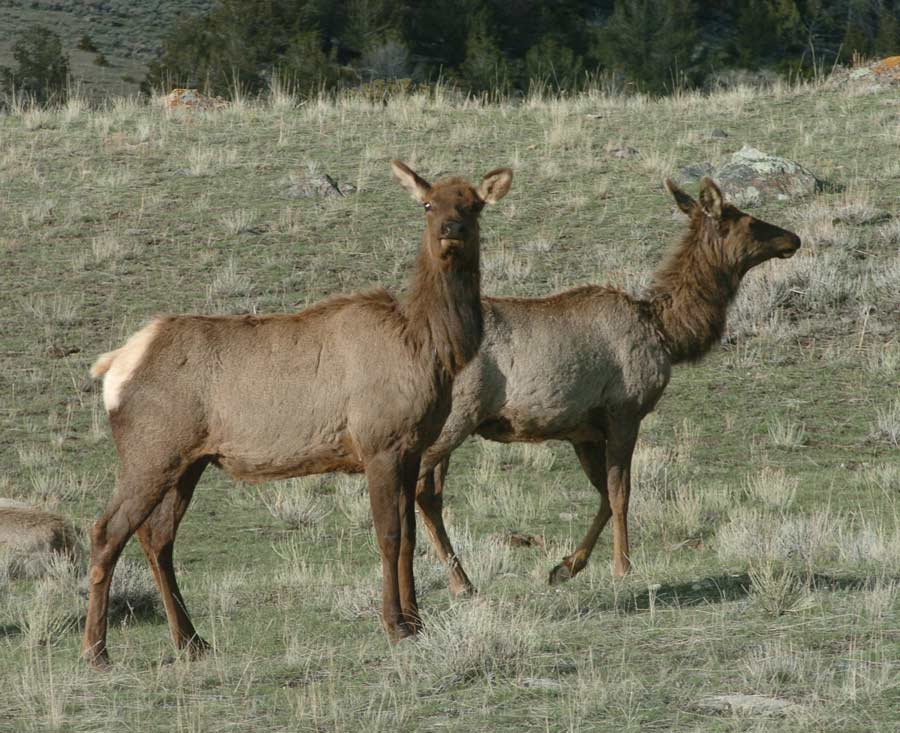
From Staff Reports
Following violent encounters between hunters and grizzly bears in each of the last two years, Grand Teton National Park managers are changing how elk hunts within the park will operate this fall.
Changes outlined in a statement released Wednesday are aimed at reducing the likelihood of future bear-human conflicts and minimizing the chances that hunters will fire at elk they aren’t sure they can kill.
Hunts aimed at reducing the burgeoning elk herds around Grand Teton have been held since 1950, usually without incident. Most national parks do not allow hunting, but Grand Teton is one of the few that does, as provided for in its establishing legislation.
In 2011 a hunter was mauled by a grizzly bear, and last year a grizzly was fatally shot when it charged three elk hunters. No charges were filed in that case after investigators determined the hunters acted appropriately in self-defense. In both cases, the bears were found to be protecting elk carcasses which they had been feeding on.
The area where both incidents happened—a section of the Snake River bottom between the Deadman’s Bar river access road and Ditch Creek—will be closed during future hunts.
The closure is necessary “to decrease the probability of grizzly bear-hunter conflicts in an area of thick timber and poor visibility,” the National Park Service said in Wednesday’s statement released by the park’s public affairs office.
As grizzly bears have recovered across the greater Yellowstone area and their numbers have increased in the Grand Teton area, the likelihood of conflicts with hunters and other people has increased.
The annual elk hunt comes at a time when bears are on a seasonal eating binge in an attempt to put on weight for hibernation. Gut piles left by hunters as well as the carcasses of elk that are wounded and later die have proven to be an attractive food source for grizzlies at a time when hunters are moving throughout the area.
Other new restrictions outlined by the Park Service include limiting the total number of rounds of ammunition to seven per hunter and limiting the number of shots fired by a hunter at a group of running elk. Both measures are meant to force hunters to carefully consider each shot to avoid wounding an elk rather than accomplishing a clean kill.
A new hunt area will open between the Gros Ventre River and the road to Kelly to replace the recently closed section.
Those opposed to the annual elk hunts have argued that it is dangerous to both grizzlies and people, and that hunting should not be allowed in the park.
Park managers and Wyoming wildlife officials have said the hunts are necessary to maintain appropriate elk herd numbers.
Hunters must carry bear-resistant spray and will be required starting this year to use lead-free ammunition.
Contact Yellowstone Gate at 307-213-9818 or [email protected].

Grand Teton National Park implementing changes for the 2013 Elk Reduction Program is more a story about the Park’s public admission of the horrific and dangerous mess they have on their hands than anything meaningful.
Limiting the number of cartridges the notoriously reckless park hunters can carry to seven is practically unenforceable and it has been proven seven cartridges is certainly more than enough to kill an endanger species grizzly bear. Attempting to limit and enforce the number of shots fired at a herd of running elk to one shot is a sad commentary of the quality of hunters attracted to Grand Teton National Park each year.
Closing the Snake River bottom area to hunting and opening two other areas of the park is not solving the potential for bear-hunter conflicts in the Park and will move the increasing problem closer to the residential areas of Kelly and west of the Gros Ventre Junction.
For the Wyoming Game & Fish Department and Grand Teton National Park to propose Park elk hunting in one of the most sensitive moose habitat areas along the Gros Ventre River during a critical time of year is completely adverse to science and will equate to political suicide.
Superintendent Mary Gibson Scott is continuing to foolishly roll the dice with the safety and welfare of Park wildlife and visitors. It is now clear that only the death or crippling of a Park visitor will force the Superintendent to act responsibly and stop the hunt.